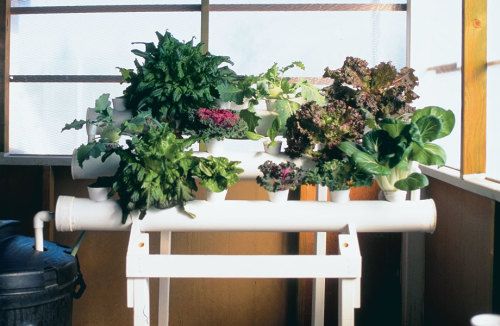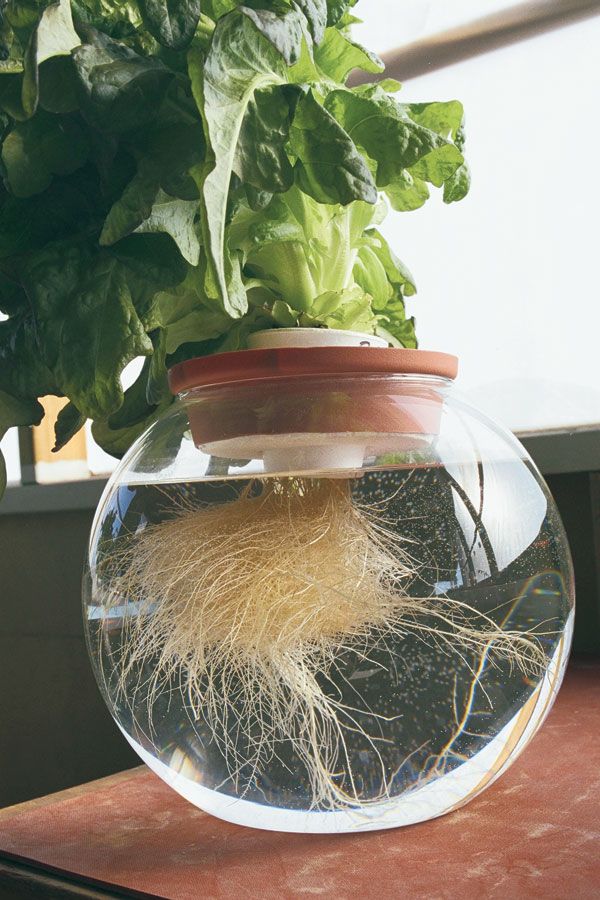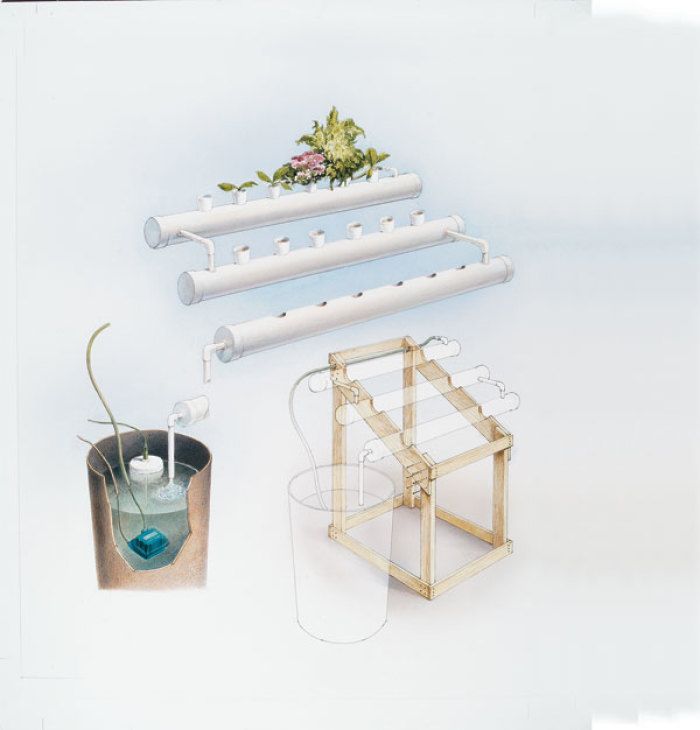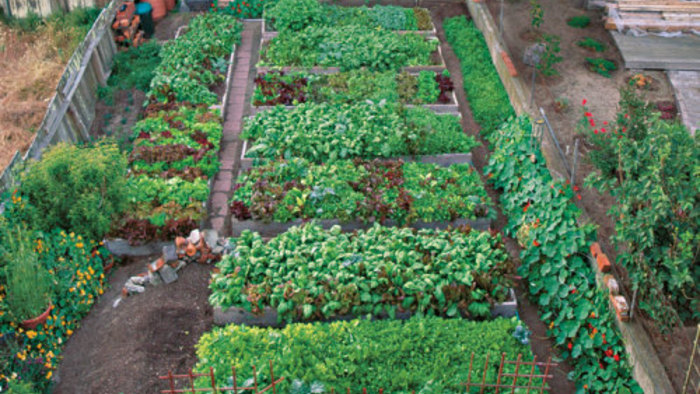
by Enrique Yglecias
August 1997
from issue #10
I wasn’t searching for a new way to grow vegetables when I stopped by the open house on hydroponics at the local extension garden. I went because the notice said there would be free yard-long bean seeds. But while walking around, I happened to see some sugar snap pea vines growing from Styrofoam cups that were set in holes cut in PVC tubes. The vines looked terrific. I stopped. It was a basic hydroponics setup. I did all my gardening in the soil and had never given hydroponics much thought. The exhibitor ran down the basics and convinced me to try it. That was 1990.
Seven years later I’m still harvesting wonderful crops from very simple systems, and I chuckle a little when people say real gardening is done in the ground. I’ve grown many types of vegetables, including tomatoes, cucumbers, squash, lettuce, spinach, kohlrabi, bok choy, and herbs.
I’ve tinkered with different designs for a hydroponic system. My latest is a wooden frame with a rack for three PVC tubes. This tiered system, holding 18 plants, uses space efficiently and makes harvesting easy. Water and dissolved nutrients are pumped from a container at the side into the top tube. Gravity pulls the enriched water through the tubes and past the roots. The water drains back into the container and is pumped back up to the top tube, where the cycle begins again.
This system can be used indoors, outdoors, on the patio, or in a greenhouse. I keep mine going all winter in a screened porch that faces the south. If I’m using it outside in the summer, I cover the unit with 70% shade cloth to protect it from the sun, which burns hot in Pima County, Arizona. I drape the cloth over a homemade pipe frame attached to the system.
With proper care, most plants in hydroponic systems grow faster than in soil. Fruits ripen earlier, with bigger yields and superior flavor. There is no tilling, raking, hoeing, weeding, messy manure, or back-breaking work. Cutworms, grubs, and other soil-borne pests are no problem. You can grow vegetables and herbs without soil or much space, making hydroponics perfect for apartment dwellers who have only balconies, sills, or patios.
Hydroponics is Greek for easy growing
It doesn’t take much to get started and succeed with this elegant technology, which has been around almost as long as dirt. The word comes from the Greek: hydro for water and ponos for labor.
In hydroponics, plants are supported and sustained in nutrient-enriched water and a medium such as perlite. Containers can be PVC tubes, plastic dish pans, or 5-gallon buckets. They shouldn’t be metal, which reacts with the nutrient solution, and they must have adequate drainage. Following just a few practices will help you succeed.
Seeds sprout and roots grow in a medium. Any sterile medium provides adequate root anchorage. Perlite and vermiculite are inexpensive and readily available. Pumice stone, gravel, coarse sand, and lava rock work well, too. These materials can be used over and over with subsequent crops by sterilizing them with 1 cup of laundry bleach per 5 gallons of water. Flood the system and let the solution stand for 30 minutes. Drain and flush with clean water.
Provide light, water, and nutrients. With indoor units, regular fluorescent bulbs, kept low over the plants, provide good light. They can be rigged to a timer to mimic natural light cycles. I’m lucky because I can keep my three-tiered system going without lights all winter. Sunlight pours into my Arizona room all day through the clear plastic sheets that insulate the screened porch.
In the Arizona desert, where I live, we’re always concerned about wasting water, but hydroponic culture uses little. I keep just 5 gallons recycling through my largest system, replacing what’s lost to evaporation. You can use more than that flushing a toilet.
The ideal water temperature for rapid growth with hydroponics is about 70˚F. Water temperature should not be allowed to go above 80˚F or below 60˚F. I put an inexpensive fish aquarium heater in the water source to maintain the temperature.
If you don’t have a chemistry degree, you’re better off buying premixed nutrients. It can be costly and time consuming to run down all the different nutrients yourself. The big three are nitrogen, phosphorous, and potassium. The plants also need calcium, magnesium, and sulphur, and some trace elements, such as boron, cobalt, copper, iron, manganese, zinc, and molybdenum. With premixed packages, all you need to do is measure and stir the nutrients into the water.
Premixed nutrients cost about $27 per 10-lb. box. That’s enough for a year or so when using a small unit like the three-tiered design.
Very little maintenance is required. Keeping up with a hydroponic system takes only a few minutes a day. Look at the plants, watch the leaves, stems, flowers, and fruits for any hint of problems. Improper water temperature is one place to check if your plants aren’t growing well.
Pleasant and productive as hydroponics is, I still keep a large garden outdoors and enjoy working in it. But I’ve found a good complement, and all because of some free yard-long bean seeds.






















Comments
Log in or create an account to post a comment.
Sign up Log in